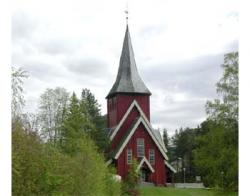
First hand experiences
Design
Have so far proceeded according to plan.(September 2006)
Application
Application - as expected - complicated by Antiquarian Authorities, but client is very enthousiastic. Solution decision seems to drag on due to lack of interest at the Antiquarian Authorities office.(September 2006)
Commissioning
As result of complications through Antiquarian Authority, commissioning for the solar system must now be settled to avoid delays. (September 2006)
Monitoring
Monitoring is completed and shows very good results. (June 2008)
The existing energy system in the building is very simple and no complicated monitoring systems seems necessary. (September 2006)
Further experiences
All systems in place and operating still well. (June 2008)
• Existing, listed buildings are part of an architectural heritage that is well protected by the state through Antiquarian Authorities. They have an important job at protecting the valuable listed buildings and groups of buildings. This important job often is in conflict with the equally important job of reducing the energy need in existing buildings.
• The processes described above are time- and resource demanding. One should be prepared for several rounds before an approval is possible – if ever.
• In this instance, had it not been for the Bishop overruling the AA, there would have been no solar thermal system.
• A motivated client and a motivated caretaker is a crucial element towards success.
• Awareness building with the caretaker is showing positive energy need reducing results.
• As the project developed the local energy utility Ustekveikja decided, contrary to our predictions, that the cost of electricity shall fall instead of rise. Whilst the electricity costs in Norway have risen over the last years and is now in the region of our predictions that is being used for our payback period calculations, Ustekveikja have reduced the costs of electricity down to between 1/2 to 1/3 of the average market price in the winter, for the inhabitants in the region as a gesture to them. Through this, Ustekveikja argues that the inhabitants in this way get their share of the valuable local hydropower plants. This undermines energy efficiency measures and the introduction of renewables as the savings are reduced and payback time increases. It is also contrary to the trends in all other parts of Europe and in Norway.
• PV (solar electricity) is normally more costly per m2 installed modules compared to solar thermal. One m2 PV also delivers only 1/3 of the energy delivered by the same m2 solar thermal. PV payback time is so long that it brings up the overall payback time for the total building project to an unnecessary high level.

